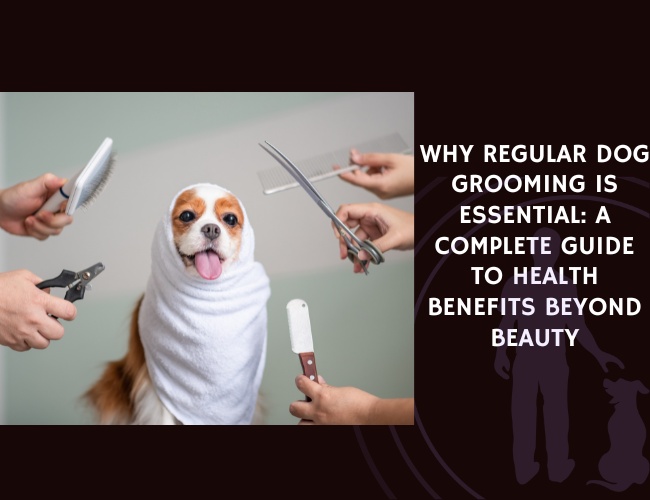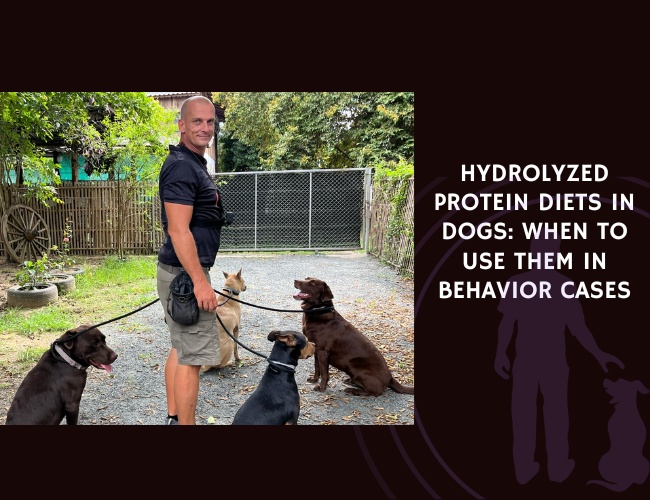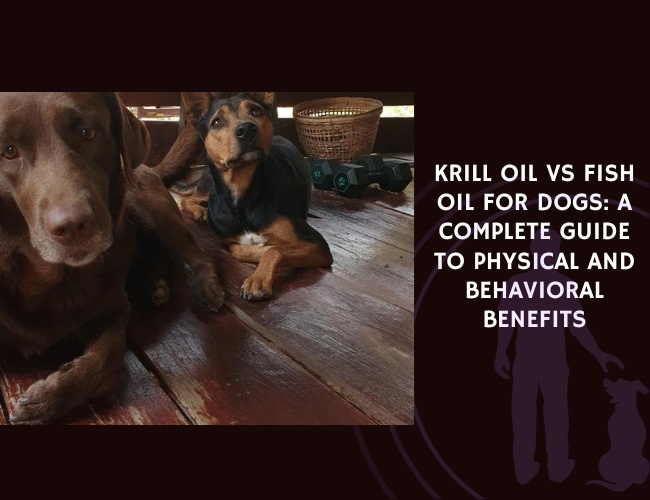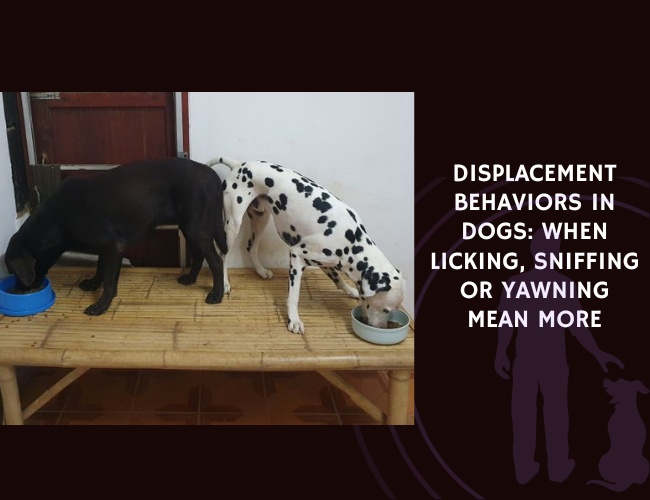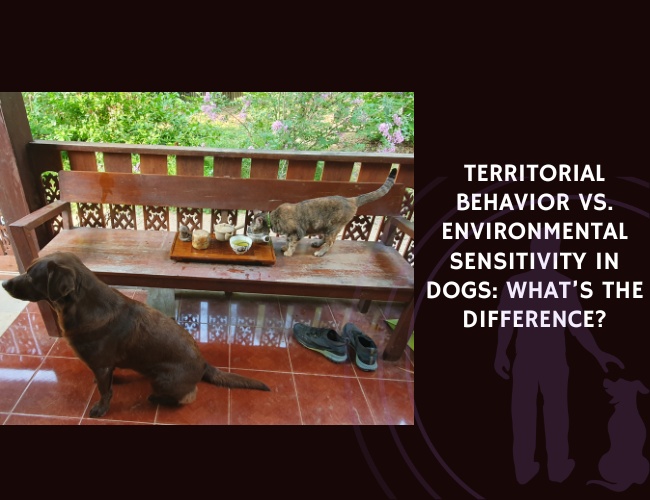Understanding the Fundamentals of Dog Grooming
Grooming is more than making your dog look good; it’s about maintaining their overall well-being. Grooming covers everything from brushing and bathing to nail trimming and ear cleaning. These practices ensure your dog’s cleanliness and can significantly impact their physical and emotional health. Regular grooming is essential to your dog’s health journey.
The Role of Grooming Beyond Aesthetics
It’s common to think grooming is about vanity. Yes, a well-groomed dog looks adorable, but grooming encompasses much more. It helps maintain good hygiene by removing dirt, debris, and bacteria. This practice keeps your dog from potential skin irritations and infections. Moreover, grooming sessions offer an excellent opportunity for owners to check their dogs for any irregularities, like lumps or skin changes, that could indicate health problems.
The Connection Between Regular Grooming and Overall Health
Grooming isn’t just about appearances; it’s essential for a dog’s overall health. A well-maintained coat prevents matting, which can be uncomfortable and painful. Brushing helps distribute natural oils, promoting a shiny, healthy coat. Nails trimmed regularly prevent overgrowth that can cause pain or alter the dog’s gait. Cleaning ears reduces the risk of infections by removing wax and debris that could lead to chronic ear problems.
Detecting health issues early is crucial, and regular grooming is one of the best ways to catch them. During grooming, you may notice changes in your dog’s skin or coat that require a vet’s attention. Spotting problems early can lead to more effective treatment and better health outcomes for your furry friend.
Grooming as a Preventive Health Measure
Grooming also serves as a preventive health measure. For example, brushing helps remove fleas and ticks, potentially dangerous parasites. Consistent grooming routines ensure you spot any skin abnormalities, reducing the chances of severe health issues. Regular teeth cleaning prevents tartar buildup and gum disease, which improves overall dental health and prevents canine heart diseases.
Moreover, nail trimming and ear cleaning are crucial. Overgrown nails can be painful and lead to joint issues over time. Regular ear cleaning prevents infections, primarily in breeds prone to ear problems. Oral hygiene is vital to prevent systemic health issues, including heart disease.
Investing time in regular grooming is an investment in your dog’s overall health. It enhances not only their physical well-being but also contributes to their emotional stability. Keeping a consistent grooming schedule can significantly improve your dog’s quality of life, making these routines one of the best preventive measures you can take for your pet.
Besides, grooming fosters a unique relationship between dogs and their owners. The interaction during grooming builds trust and strengthens your bond, enhancing their emotional well-being.
As we continue to explore the myriad benefits of grooming, let’s delve into the essential grooming practices to ensure your pup receives the care they deserve.
Why is it important to groom your dog regularly?
Regular grooming is crucial for maintaining your dog’s overall health and well-being, extending far beyond mere aesthetics. Grooming helps prevent skin irritations and infections by removing dirt, debris, and bacteria that can accumulate on your dog’s coat. This practice not only keeps your pet clean but also reduces the risk of developing skin conditions that could lead to more severe health issues if left untreated. Additionally, regular grooming sessions provide an opportunity to check for abnormalities such as lumps or parasites, allowing for early detection and intervention, which is vital for effective treatment. Moreover, grooming plays a significant role in your dog’s emotional health. The process of brushing, bathing, and handling during grooming can be soothing and stress-relieving for dogs, akin to a spa experience. This routine interaction fosters a sense of security and comfort, reducing anxiety and promoting relaxation. Regular grooming also strengthens the bond between you and your pet, as the time spent together during these sessions enhances trust and understanding, contributing to a deeper emotional connection. Incorporating regular grooming into your dog’s care routine is an investment in their long-term health. It ensures that your furry friend remains comfortable, healthy, and happy, while also preventing potential health problems before they arise. By prioritizing grooming, you’re not just keeping your dog looking their best; you’re actively contributing to their overall quality of life.
Physical Health Benefits of Regular Grooming
Routine grooming is a treasure trove of health perks for dogs. It’s not just about keeping them stylish; it’s a vital part of ensuring their overall happiness and well-being!
Early Detection of Health Issues
One of the most significant advantages of regular grooming is the early detection of skin issues, lumps, and parasites. During grooming, owners or professional groomers often perform a hands-on examination of the dog. This tactile interaction can reveal abnormalities like lumps or rashes that might otherwise go unnoticed. Catching these issues early allows for timely veterinary intervention, which is crucial for effective treatment. Regular grooming sessions also make it easier to spot parasites, such as fleas or ticks, before they cause more serious health problems.
Maintenance of Coat and Skin Health
Brushing your dog’s coat is not just a grooming necessity; it’s essential for maintaining skin and coat health. Regular brushing helps prevent matting and tangling, which can cause discomfort and skin irritations. It also stimulates the production of natural oils in the dog’s skin, which are then distributed throughout the coat. These natural oils keep the coat shiny and healthy, reducing shedding and supporting skin hydration.
Bathing is another critical component. A proper bathing routine helps cleanse the skin, removing dirt, allergens, and bacteria. This helps prevent skin irritations and infections, ensuring that your dog’s skin remains healthy and vibrant.
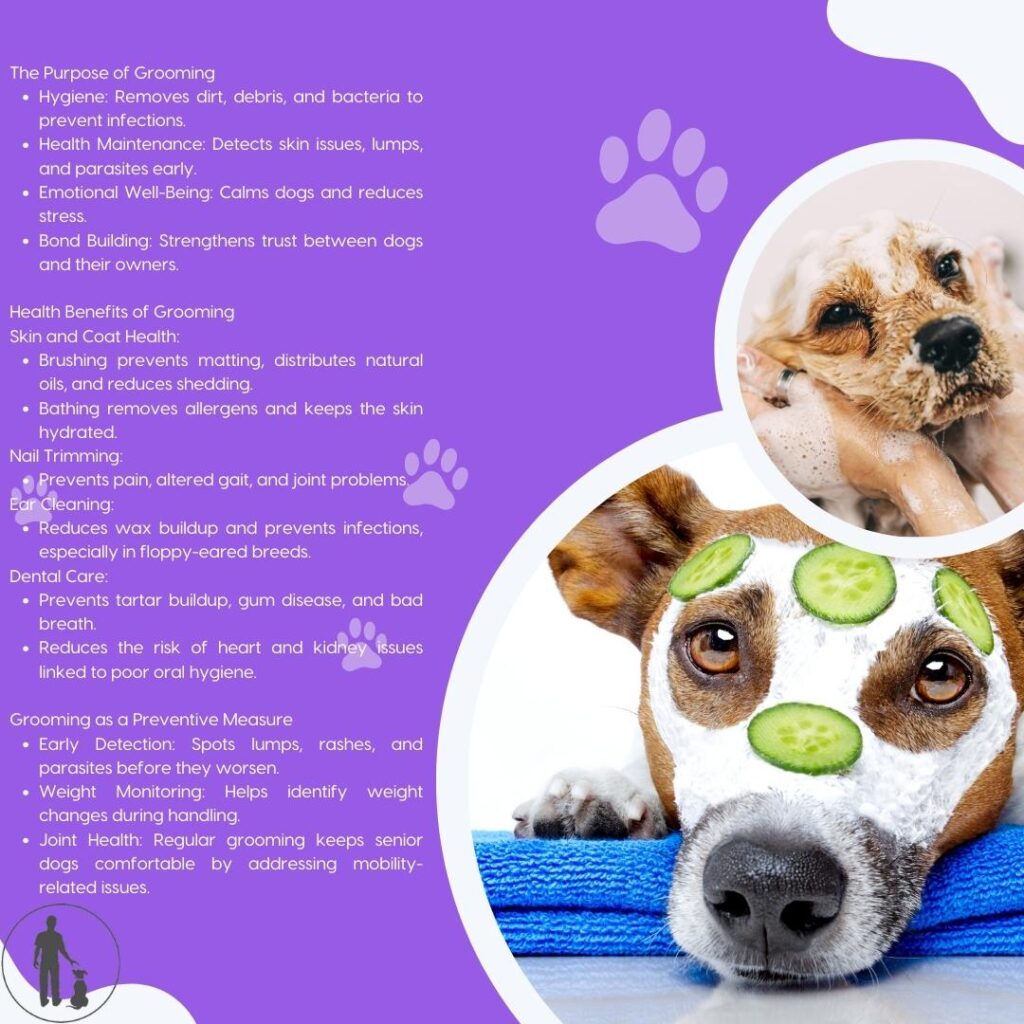
Prevention of Common Health Issues
Grooming also encompasses essential preventive measures like nail trimming and ear cleaning.
Nail trimming: Overgrown nails can cause pain and discomfort, impacting a dog’s ability to walk properly. If left unattended, this can lead to joint problems over time. Regularly trimming your dog’s nails ensures that they walk comfortably and reduces the risk of injuries.
Ear cleaning: Regular ear cleaning is crucial, especially for breeds prone to ear infections. It helps remove wax buildup and debris, lowering the chances of infections. Keeping a dog’s ears clean ensures better ear health and reduces the likelihood of irritation or more severe issues.
These practices not only prevent common health problems but also contribute to the overall comfort and well-being of your furry friend.
Regular grooming is a comprehensive practice that supports your dog’s physical health. It’s more than just appearance—it’s about ensuring your dog lives a healthy, comfortable life. This hands-on care allows for early problem detection, supports skin and coat health, and prevents a variety of health issues.
Regular grooming provides a foundation for a healthy and happy pet, fostering a closer bond with their owners, which we’ll explore further after delving into the emotional and behavioral advantages.
Emotional and Behavioral Advantages
How Grooming Reduces Stress and Anxiety
Did you know that regular grooming helps in reducing stress and anxiety in dogs? This calming effect occurs because grooming releases endorphins – the body’s natural “feel-good” hormones. These hormones play a crucial role in making your dog feel relaxed and secure. Think of it as spa time for your furry friend, during which they experience the same relaxation that we do while being pampered.
When dogs become accustomed to a consistent grooming routine, it can significantly alleviate their behavioral symptoms associated with stress. This is especially true for dogs that may be anxious or reactive. The repetitive nature of grooming and the gentle touching can establish a sense of routine and predictability, further promoting relaxation .
Strengthening the Bond Between Dogs and Their Owners
Grooming isn’t just about cleanliness; it’s a golden opportunity to build and strengthen the bond you share with your dog. The time spent grooming your dog can promote empathy and understanding between you two, fostering a deep and trusting relationship.
Think of grooming as quality one-on-one time. During these sessions, you’re likely to notice your dog’s unique responses and behavior, which can enhance your ability to understand and respond to their needs. The physical closeness and soothing touch can make your dog feel more secure and loved, reinforcing their emotional connection to you.
Improving Tolerance for Handling and Veterinary Visits
A well-groomed dog is often a well-behaved dog, especially in situations that require handling by others. Regular grooming can make your dog more comfortable with being touched and handled, an essential trait when it comes to veterinary visits.
Frequent grooming sessions help your dog get used to the sensation of being touched in sensitive areas, such as the paws, mouth, and ears. This familiarity can reduce anxiety and make veterinary examinations less stressful for both your dog and the vet. It can also lead to a more cooperative interaction during these visits, speeding up the process and making it less traumatic for your pet.
Communication doesn’t always have to involve words; sometimes, actions speak louder. The tactile interaction involved in grooming—such as brushing, nail trimming, and ear cleaning—can effectively communicate care and concern, making your dog more receptive to similar interactions in other contexts.
What’s Next?
With the understanding of how grooming can provide significant emotional and behavioral advantages, we can now explore essential grooming practices that can keep your dog healthy and happy. Stay tuned for tips and techniques tailored to different coat types and grooming needs!
Essential Grooming Practices
Regular dog grooming is key to ensuring their well-being beyond just looking good. Each aspect of grooming has its distinct importance.
Regular Brushing Techniques and Their Importance for Different Coat Types
Brushing your dog regularly is essential to maintaining their coat health. Here are a few tips for different coat types:
- Short-Coated Breeds: These dogs need less frequent brushing, but it still helps remove loose fur and distribute natural oils. Brushing once a week is typically enough.
- Long-Coated Breeds: Daily brushing is crucial to prevent mats and tangles. Using a slicker brush can manage tangles, and a bristle brush can distribute oils.
- Double-Coated Breeds: These dogs shed seasonally and require regular deshedding. Use an undercoat rake to reach the loose fur beneath the top coat.
No matter the breed, brushing your dog helps remove dirt, debris, and reduces shedding. Regular brushing sessions are perfect for bonding and checking for any skin abnormalities.
Proper Bathing Frequency and Methods to Maintain Skin Health
Bathing your dog keeps their skin and fur clean, but it’s essential to get the frequency and methods right:
- Frequency: Generally, a dog should be bathed once a month. More frequent baths can dry out their skin. However, dogs with skin conditions may need specific bathing routines as advised by a vet.
- Methods: Use a dog-specific shampoo to avoid skin irritations. Always ensure thorough rinsing to prevent shampoo residue, which can dry out or irritate the skin. After bathing, towel dry or use a blow dryer on a low setting while brushing the coat.
Remember, regular baths help remove allergens and keep your dog comfortable and smelling fresh.
Nail Care, Ear Cleaning, and Dental Hygiene Routines
Keeping up with nail care, ear cleaning, and dental hygiene helps prevent common ailments:
Nail Care
Overgrown nails can lead to discomfort and gait issues. Here’s how to trim nails effectively:
- Frequency: Trim nails every 3-4 weeks.
- Method: Use dog-specific nail clippers. Ensure you avoid the quick, which is the blood supply to their nails, usually visible as a darker area within the nail.
Ear Cleaning
Dogs’ ears can harbor bacteria and yeast, leading to infections. Routine cleaning is crucial:
- Frequency: Inspect and clean your dog’s ears weekly, especially if your dog has floppy ears.
- Method: Use an ear cleaning solution recommended by a vet. Apply the solution to a cotton ball and gently clean the visible part of the ear. Avoid probing deep into the ear canal.
Dental Hygiene
Oral health is often overlooked but crucial for your dog’s overall well-being:
- Frequency: Brush your dog’s teeth 2-3 times a week.
- Method: Use a dog-specific toothbrush and toothpaste. Regular brushing prevents tartar buildup and keeps their breath fresh.
Maintaining these grooming routines helps your dog stay healthy and prevents health issues from developing.
With essential grooming practices in place, you’ll ensure your dog remains happy, clean, and well looked after. This regular care doesn’t just keep your dog looking their best; it is a fundamental part of their overall health and happiness 😊.
Breed-Specific Grooming Requirements
When it comes to dog grooming, one size does not fit all. Each breed has its unique grooming needs based on their coat type, which affects how often they should be groomed and the techniques used. Let’s dive into the specifics for short-coated, long-coated, and double-coated breeds.
Grooming Needs by Coat Type
Short-Coated Breeds
Dogs with short coats, like Beagles and Bulldogs, have less intensive grooming needs. However, this doesn’t mean they can be neglected! Regular brushing, approximately once a week, helps remove loose hairs and distribute natural oils, keeping their skin healthy and shiny. Bathing should occur about once a month unless they get particularly dirty or smelly.
Long-Coated Breeds
Long-coated breeds such as Shih Tzus and Afghan Hounds require more frequent grooming. Daily brushing is essential to prevent matting and tangling. These breeds are prone to developing knots that can cause skin infections if left unchecked. Bathing is recommended every four to six weeks, ensuring the coat remains clean and free of debris.
Double-Coated Breeds
Breeds with double coats, like Huskies and Shelties, have an undercoat and an outer coat. These breeds need regular deshedding sessions, at least once a week, to manage their thick fur, especially during seasonal shedding periods. Regular brushing helps to remove the loose undercoat and prevent mats. Bathing frequency for double-coated breeds can be every six to eight weeks.
Frequency of Grooming Sessions
Understanding the required grooming frequency is crucial for maintaining your dog’s health:
- Short-coated breeds: Weekly brushing and monthly bathing.
- Long-coated breeds: Daily brushing with bathing every four to six weeks.
- Double-coated breeds: Weekly deshedding with bathing every six to eight weeks.
Special Considerations for Health Concerns
Certain breeds come with specific health issues that grooming can help manage. Regular and thorough grooming sessions provide an opportunity to detect any abnormalities early.
- Ear Infections: Breeds with floppy ears, like Cocker Spaniels, are prone to ear infections. Regular ear cleaning can help prevent this.
- Skin Problems: Breeds with folded skin, such as Bulldogs, require careful cleaning in those folds to prevent bacteria buildup.
- Dental Issues: Small breeds often have dental problems. Regular teeth brushing is vital to preventing tartar buildup and related health issues.
Each grooming session is an opportunity to check for lumps, skin irritations, or any sign of parasites. By keeping up with the grooming schedule appropriate to your dog’s breed and coat type, you can ensure a proactive approach to their overall health and hygiene.
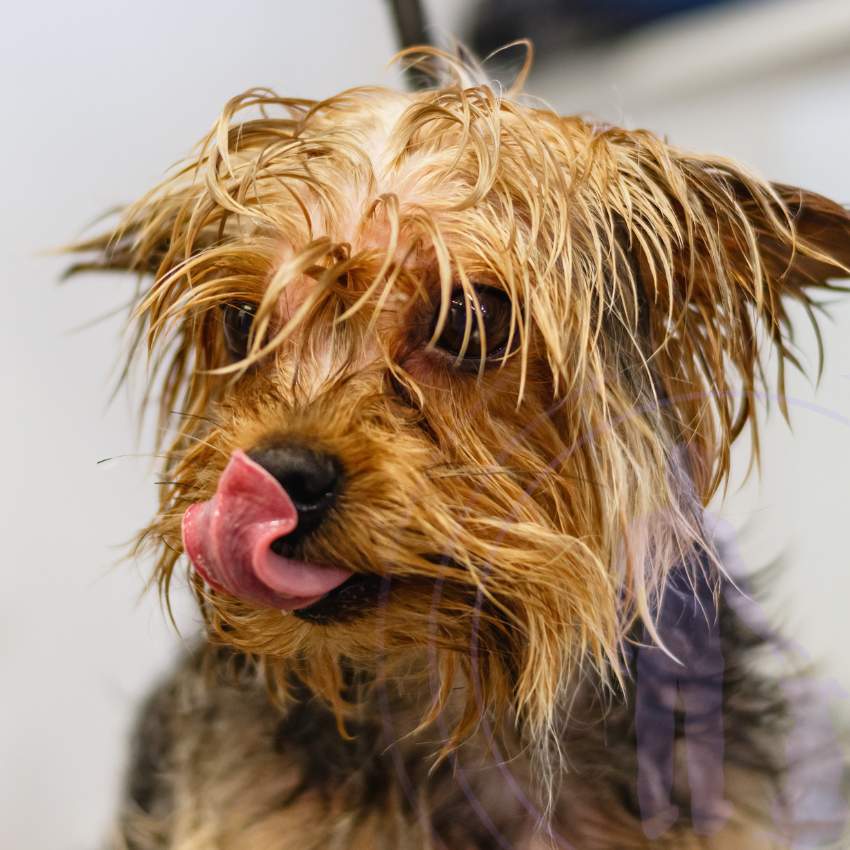
Professional vs Home Grooming
Dogs need consistent grooming, but should you opt for at-home treatments or seek professional help? Let’s explore the benefits, tools, and decision-making tips to ensure your dog stays healthy and happy.
Benefits of Professional Grooming Services
Professional groomers offer specialized care that’s often necessary, especially for certain breeds. Here’s why professional grooming can be invaluable:
- Expertise and Experience: Professional groomers are trained to understand different coat types and specific needs of various breeds, providing specialized care that’s hard to match at home. They know how to safely handle difficult tasks, such as trimming around sensitive areas.
- Advanced Tools: Groomers have access to high-quality, professional-grade tools that are often more effective and safer than what’s available for at-home use. This includes grooming tables, high-velocity dryers, and specialized clippers.
- Health Checks: A professional groomer can spot early signs of health issues like skin infections, ear problems, and dental issues. Their trained eye might catch what’s easy for a pet owner to miss, making regular appointments a preventive health measure.
Essential Tools and Techniques for Effective Home Grooming
Grooming at home is not only cost-effective but also an excellent way to bond with your dog. To make the most of at-home grooming, having the right tools and techniques is crucial:
- Brushing: Invest in brushes and combs suited for your dog’s coat type. Regular brushing helps eliminate mats and tangles and distributes natural oils through the fur, promoting a healthy coat.
- Nail Trimmers and Styptic Powder: Trimming nails can be tricky, but with practice and the right tools, such as guillotine or scissor-style clippers, it becomes manageable. Keep styptic powder on hand to stop any bleeding if you accidentally cut too close.
- Ear Cleaning Solution: Use a vet-approved ear cleaning solution to clean your dog’s ears. Regular ear maintenance helps prevent infections, especially in breeds prone to ear issues.
- Dog Shampoo: Choose a mild, dog-specific shampoo to maintain coat and skin health. Avoid human shampoos as they can irritate a dog’s skin.
- Toothbrush and Canine Toothpaste: Maintaining oral hygiene is critical. Use a toothbrush designed for dogs along with canine toothpaste to prevent dental diseases that can lead to more severe health issues.
When to Choose Professional Grooming Over Home Care
Deciding when to go pro can depend on several factors:
- Breed and Coat Type: Dogs with long, thick, or curly coats often require more skilled grooming than those with short hair. Breeds like Poodles, Shih Tzus, and Afghan Hounds usually benefit more from professional grooming.
- Specific Health Concerns: If your dog has skin conditions, ear problems, or dental issues, professional groomers can provide tailored care that can prevent these conditions from worsening.
- Behavioral Issues: Dogs showing aggression or anxiety during grooming might be better off with a professional. Groomers are trained to handle pets in a way that minimizes stress and ensures safety.
- Time and Convenience: Professional groomers save time by handling the entire grooming process efficiently. If your schedule is hectic, professional services can ensure your dog receives consistent and thorough care.
By considering your dog’s unique needs and understanding the specific benefits of both professional and home grooming, you can make an informed decision that keeps your furry friend healthy and happy.
Next, we’ll dive deeper into the common grooming mistakes to avoid and practical tips to establish a fail-proof routine at home.
Common Grooming Mistakes and Solutions
Avoiding Overwashing and Improper Tool Usage
Overwashing your dog can lead to dry, irritated skin. It’s essential to find the right balance to maintain your dog’s natural oils. Typically, dogs only need a bath once a month, but this can vary based on their breed and lifestyle. Using the correct tools is also crucial. For instance, using a brush designed for a short-haired breed on a long-haired dog can cause discomfort and even damage their coat. Always choose grooming tools that are specific to your dog’s coat type.
Addressing the Consequences of Insufficient Grooming
Neglecting regular grooming can lead to several issues. Matted fur can cause skin irritations and infections, while overgrown nails can cause pain and alter your dog’s gait, potentially leading to joint problems. Additionally, unclean ears can become a breeding ground for infections. Regular grooming is not just about appearance; it’s fundamental to your dog’s overall health and well-being.
Practical Tips for Establishing an Effective Grooming Routine
- Brush Regularly: Find a brush that’s right for your dog’s coat type and make brushing a regular activity. It helps remove dirt, prevents matting, and distributes natural oils.
- Schedule Baths Appropriately: Avoid overwashing to prevent stripping your dog’s natural oils. Once a month is usually sufficient, but always cater to your dog’s specific needs.
- Nail Care: Trim your dog’s nails regularly to avoid discomfort and potential health issues. Invest in a good-quality nail trimmer and learn the proper technique.
- Ear Cleaning: Regularly check and clean your dog’s ears to prevent infections. Use a gentle ear cleaning solution recommended by your vet.
- Dental Hygiene: Don’t neglect your dog’s dental health. Brush their teeth regularly to prevent tartar build-up and gum disease.
Creating a grooming routine that works for both you and your dog ensures they remain healthy and happy. Adapting these tips can make grooming sessions smoother and more efficient for everyone involved.
Future Considerations in Dog Grooming
Emerging Research on Long-Term Health Impacts of Regular Grooming
Emerging research is shedding light on the long-term health benefits of regular grooming for dogs. Recent studies suggest that consistent grooming can go beyond immediate aesthetic and cleanliness benefits. By maintaining a regular grooming schedule, potential health issues like skin infections, lumps, and parasites are often detected early. This leads to timely intervention and treatment, which is crucial for a dog’s longevity.
One significant area of study examines the link between grooming and long-term dental health. Regular teeth cleaning prevents tartar buildup, gum disease, and even systemic health issues such as heart disease. Maintaining oral hygiene through grooming routines may thus contribute to overall canine health and longevity. Continual research is needed, but these preliminary findings emphasize how vital grooming is for more than just keeping our furry friends looking good.
New Approaches to Grooming Anxious or Reactive Dogs

Grooming can be a stressful experience for some dogs, particularly those that are anxious or reactive. However, new approaches are being developed to make the process more comfortable and less stressful. Techniques such as desensitization and counter-conditioning are gaining popularity. These methods involve gradual exposure to grooming activities and pairing them with positive experiences, like treats and praise.
Products designed to calm dogs during grooming, such as pheromone sprays and anxiety wraps, are also proving effective. Additionally, some groomers are adopting fear-free grooming practices to minimize stress. These practices might include modifying the grooming environment to be more soothing, using low-noise clippers, or even scheduling multiple short sessions instead of one long one.
Adapting these approaches can make grooming a more positive experience for both dogs and their owners.
Evolution of Grooming Practices and Tools
Grooming practices have evolved significantly over the years, influenced by advancements in technology and a better understanding of canine health and behavior. Contemporary grooming techniques prioritize both the physical health and emotional well-being of dogs. Modern tools, such as ergonomic brushes, gentle yet effective shampoos, and advanced grooming appliances, are designed to enhance the grooming experience.
Technology continues to innovate in the grooming sector. For example, there are digital apps that help pet owners keep track of their dog’s grooming schedule, provide reminders for tasks like nail trimming or bath time, and even offer tutorials for home grooming techniques. These technological advancements are making it easier for pet owners to ensure their dogs receive consistent care.
As research progresses and technology evolves, the grooming industry is set to become even more tailored and efficient, prioritizing the comprehensive well-being of our beloved pets.

